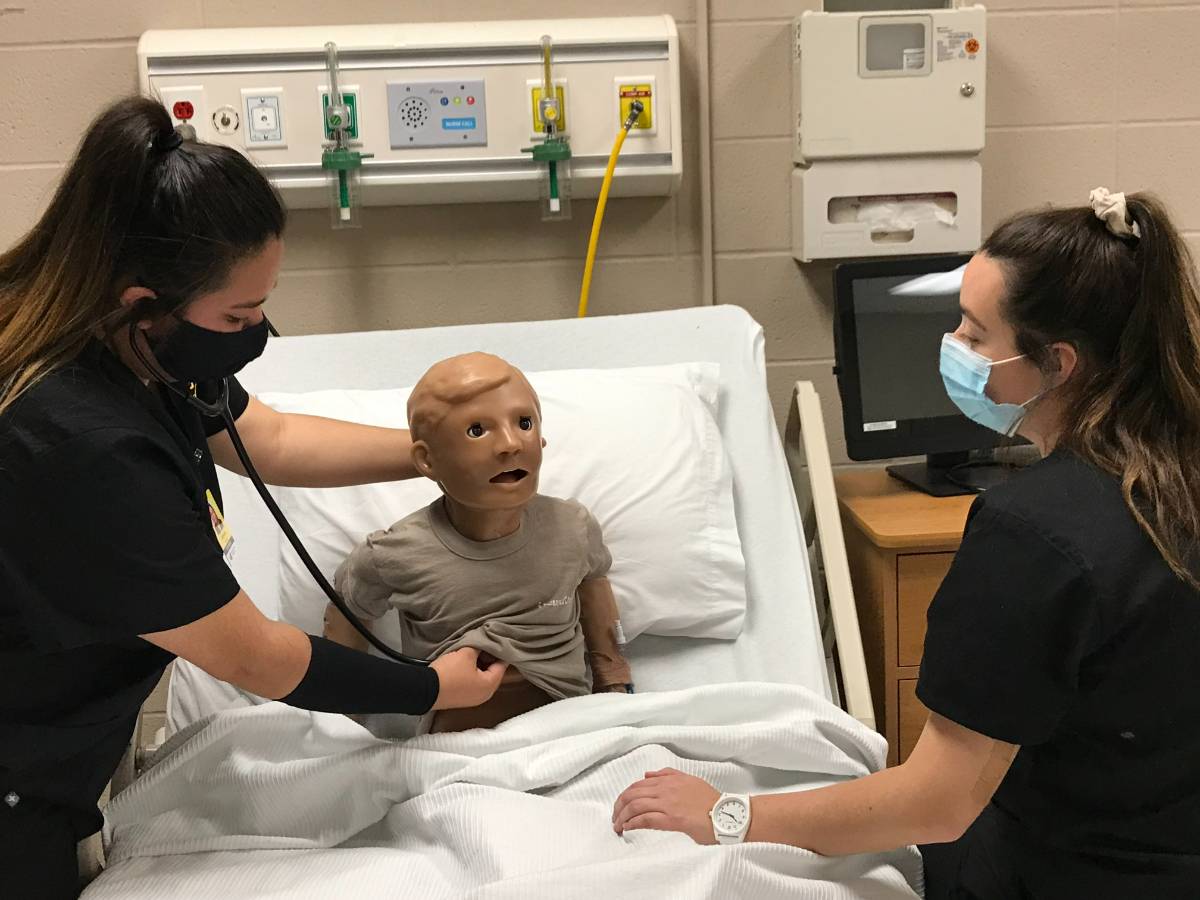The College of Health Professions (CHP) has initiated a major expansion to its clinical simulation capabilities. Students across the CHP’s clinical degree programs will have increased exposure to high-tech robotic simulated patients in preparation for treating humans.
CHP students will continue to attend clinical rotations at local hospitals, outpatient clinics, and rehabilitation centers. However, the expanded simulation capabilities will allow students to prepare for real life clinical situations – some life threatening – through a range of simulated scenarios that mimic real events. The controlled environment of a simulation clinical setting allows the students to not only evaluate their own performance, but also provides the opportunity to approach unexpected situations through teamwork.
“Robotic simulation is as close as you get to working with real patients.” said Dr. Gregory Hand, dean of the College of Health Professions. “This is very high-tech equipment and a major financial investment by the college, but there is simply no substitute when preparing health professionals for real-life, sometimes critical situations.”
The high-fidelity robotic manikins are sex specific and can be infant, child or adult. Not only can the manikins talk, frown, cry, bleed, go into labor and give birth, but they can also be programmed to simulate disease signs and symptoms. Cameras in the simulation clinics are used for recording activities so that students can review their performances and the cameras can be used in real time for feedback from faculty instructors with microphones watching in an adjacent monitoring room.
“This is a great opportunity to increase the technology that is available to help educate students,” said Dr. Debra Pile, chair and associate dean for nursing practice. “Simulation scenarios provide a safe learning space for students and increases their confidence when they provide care to live patients.”
Purchasing and programming simulation mannequins, as well as refurbishing simulation rooms and other facilities and equipment, has already begun and should continue through the spring semester as class schedules allow.


 College of Health Professions
College of Health Professions